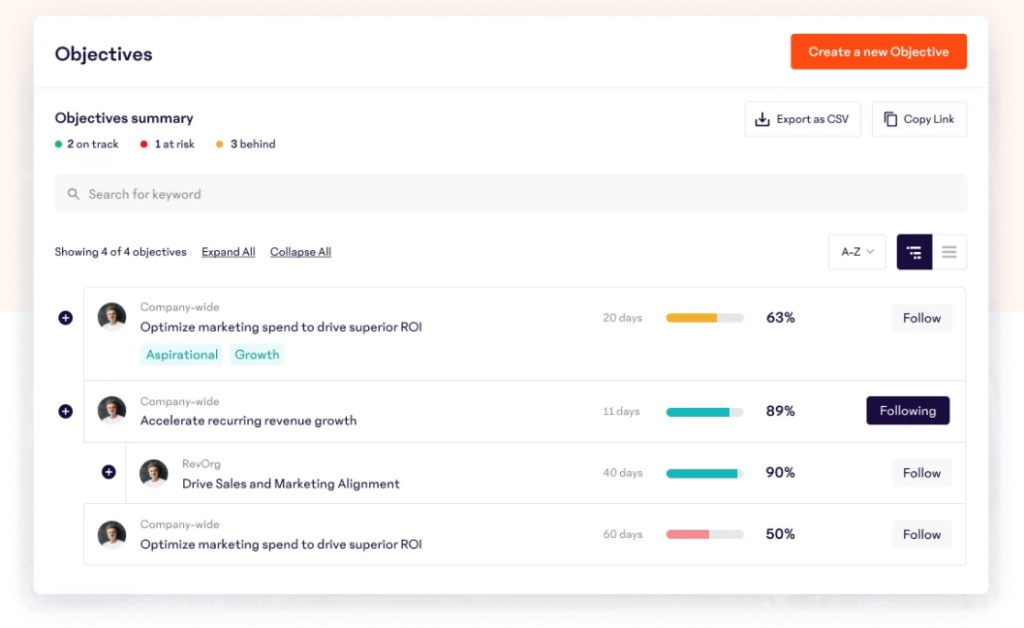How to Measure HR Effectiveness with 12 Key Metrics
You’d be hard-pressed to find a business executive today who doesn’t believe their people are the organization’s most valuable asset. So why do so many of those same leaders not consider HR a strategic function? Why do HR leaders still have to fight for a seat at the table?
According to Gartner, 58% of organizations say a lack of relevant metrics to track HR progress is one of the top barriers to effective strategic planning. To earn their rightful place in high-level conversations, HR leaders must be equipped with a set of definitive metrics on which to base strategic business goals and prove the ROI of HR initiatives.
The role of HR in organizational performance
Historically, the HR department has been seen as primarily an administrative function. So rather than inviting their HR leaders to important decision-making conversations, many top executives only come to them after the fact, when it’s time to execute the plans that have already been made.
As champions of people and culture, the HR team should be involved in establishing internal programs and processes to help employees thrive. Unfortunately, when HR doesn’t have a voice in strategic planning, employee experience suffers.

Most other business functions have a standard set of metrics that show the effectiveness of their team and how they’re contributing to the company’s bottom line (e.g., sales revenue, customer service ratings, etc.). But the best metrics for proving the value of HR haven’t always been as clear-cut.
Let’s change that.
12 metrics for measuring HR effectiveness
To align your people operations strategy with business goals and earn your rightful seat at the strategic table, consider the following HR success metrics.
Time-to-hire
Time-to-hire refers to the amount of time between when a candidate is sourced and when they accept an offer from your company. (This is slightly different from time-to-fill, which refers to the time it takes to hire from the date a new job opening is published.) In both cases, the sooner you can get a great new hire through your recruitment process, the better.
By tracking time-to-hire or time-to-fill, your team can find ways to streamline the hiring process and remove any bottlenecks that are slowing things down. Showing improved efficiency of your average time-to-hire is an excellent metric for HR professionals to tout.
Cost-per-hire
Cost-per-hire includes the total recruitment costs (internal and external) for each person your company hires. Costs can include software fees, advertising expenses, relocation costs, recruiter salaries, and more.
As with time-to-hire, finding ways to make recruitment more efficient can reduce costs and is another great metric for proving HR value. (It’s also helpful to reference when asking for support on programs to boost retention. The less turnover you have, the less you have to spend on filling vacant roles.)
Employee engagement rate
Gallup’s 2022 State of the Global Workplace report shows only 21% of employees are engaged at work. Employee engagement is critical to productivity, performance, and retention, and can be tied directly to business profitability. This is a metric HR leaders and executive teams must pay attention to.
A science-backed employee engagement survey can provide metrics to gauge the state of engagement across the organization and at department or team levels. By tracking these numbers over time, HR leaders can see where there are challenges and double down on what’s working to improve engagement.

Revenue-per-employee
Revenue-per-employee is the amount of money each employee generates for the company, on average. You can calculate it by dividing total revenue by the current number of employees.
Think of revenue-per-employee as a productivity ratio. The more productive employees are, the more money the company generates. This metric can help you gauge the success of HR programs that aim to increase productivity. If the number trends up, your initiatives are proving effective.
Employee Net Promoter Score (eNPS)
The employee Net Promoter Score (eNPS) is used to track employee loyalty and pride in an organization. It scores how enthusiastic employees are about their workplace by asking one simple question: “On a scale of 0 to 10, how likely are you to recommend our organization as a place to work to others?”
While it’s a fairly rudimentary metric, eNPS can give you a good overall sense of employee satisfaction and engagement. It’s a solid metric for HR leaders to track, as fluctuations in eNPS can signal changes in employee sentiment (whether positive or negative). Organizations with a high eNPS also have a competitive advantage, as it speaks to the employer brand and whether or not people choose to work there over other companies.

Regrettable turnover rate
Regrettable turnover occurs when a high-performing employee that the company would have liked to keep decides to leave unexpectedly. (Someone who is let go or laid off is not considered regrettable.) The percentage of departures that fall into this category over time is your regrettable turnover rate.
Tracking regrettable turnover metrics can help you understand more about the high performers leaving your company so you can investigate what might be driving them away. Identifying your high performers and focusing retention efforts on them can help you decrease your regrettable turnover rate.
Manager effectiveness
Managers have a huge impact on their teams and organizations. According to our 2022 Workplace Report, over 53% of employees say unsupportive management is one of the top reasons for leaving a company. On the flip side, over 57% say supportive management and a good boss are two of the most important factors for staying at their company.
By tracking how managers across the organization are performing, HR teams can identify the ones having success and provide manager training and coaching to those who may be struggling.
Several metrics can help you hone in on manager effectiveness, including:
- Turnover rates by manager
- Engagement scores by manager
- Performance review completion rate by manager
- Goal attainment rate by manager
Employee retention rate
As mentioned above, keeping your high performers should be a top strategic HR priority. But it’s also important to track employee retention overall. Our research shows that more than 80% of business leaders believe a decrease in employee retention presents a risk to company success.
To calculate your retention rate, take the number of employees who remained employed for a specific time period and divide that by the number of employees you started with, then multiply by 100. (Don’t include any new hires that started during that period.)
For example, if you had 400 employees on January 1st and on December 31st you still employed 385 of those people, your annual retention rate would be 96%. Tracking retention year-over-year can help you track workforce growth.
Absenteeism rate
Absenteeism refers to chronic or habitual absence from work that is unplanned or unannounced. It can even include employees who are constantly late, leaving early, or taking extended lunches.
Absenteeism can be a major red flag and signal employee disengagement and low job satisfaction. It can also be tricky to track, especially for salaried or remote workers who aren’t punching a clock.
HR teams should partner with managers to monitor unexcused absences, habitual lateness, and other signs of absenteeism on their teams. Tracking these reports of absenteeism can help you identify trends over time across different teams and departments.
Training effectiveness
If your organization is investing in training and professional development for employees (and hopefully you are!), there’s a pretty good chance your leaders want to see that those programs are actually working.
By establishing OKR goals (objectives and key results) around your training and development initiatives, you can measure the effectiveness of your programs and show executives how those efforts are impacting the business.

Internal mobility rate
Deloitte’s Global Human Capital Trends survey found that only 6% of executives believe they are excellent at moving people from role to role. (59% rated themselves as inadequate or fair.) That’s not very encouraging, considering career growth is so important to most employees today.
Internal mobility can significantly improve employee engagement and retention and reduce regrettable turnover. After all, if a high performer in your organization doesn’t see a path forward internally, why wouldn’t they look elsewhere for career advancement?
HR can track internal mobility rate by calculating the total number of internal movements (promotions, department/role changes) and dividing that by the total number of employees (x100). The higher the percentage, the better the organization is at giving employees opportunities for growth.
Cost of HR per employee
People operations can be expensive (and for good reason!). But data-driven business leaders want to see where those dollars are going and that they’re being used efficiently.
According to Gartner’s 2023 HR Budget and Efficiency Benchmarks report, HR functions spend an average of $2,524 per employee annually. The top spending areas are recruiting ($425 per employee), total rewards ($213 per employee), and learning and development ($188 per employee).
Tracking HR expenses and leveraging technology and automation can help you identify opportunities to reduce costs and maximize the efficiency of your team—which the C-suite will appreciate.
Measure HR effectiveness with 15Five
According to Gartner, HR technology is the number one area HR teams plan to increase their investments in 2023. While tech can’t replace the humans in human resources—you—it can make your job more manageable and enable your team to work more efficiently.
With the right HR SaaS software, you can check in on employees’ well-being, get continuous feedback, develop high-performing managers, and enable a more dynamic performance management cycle.




